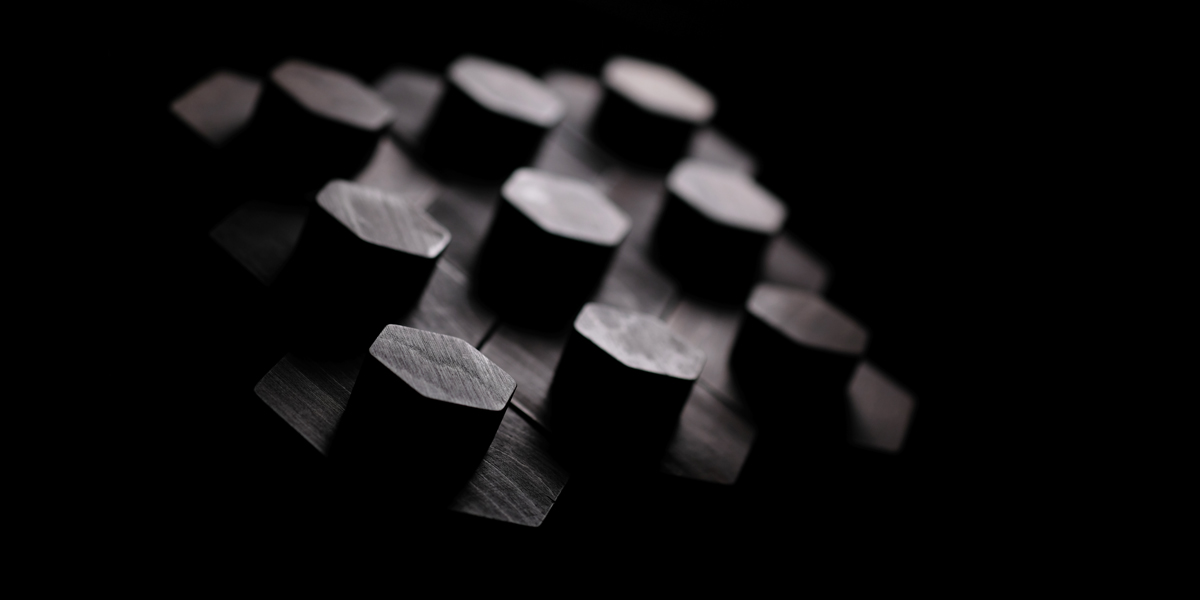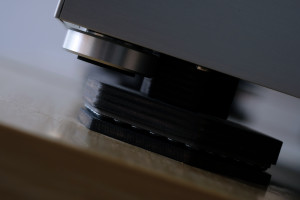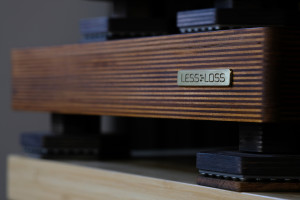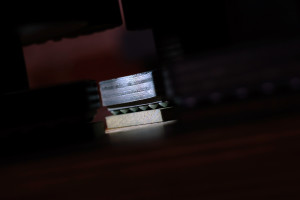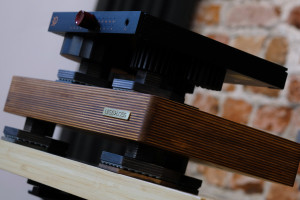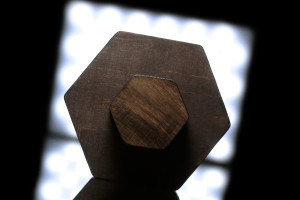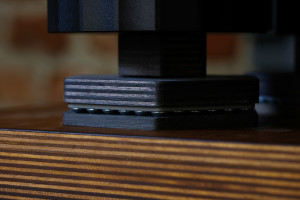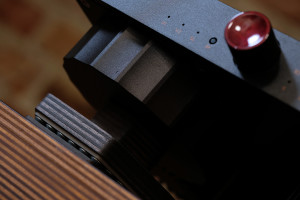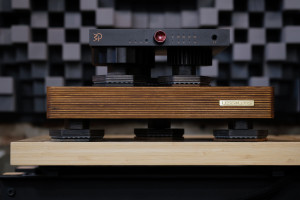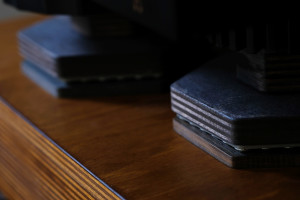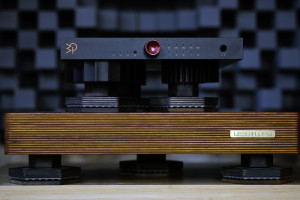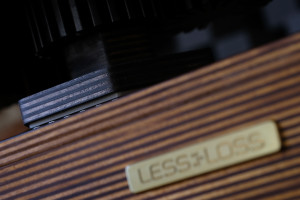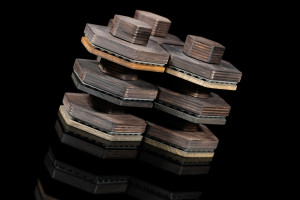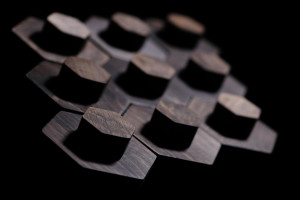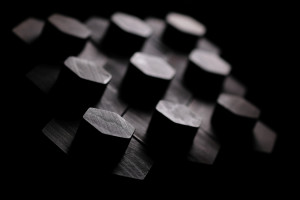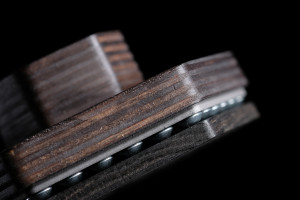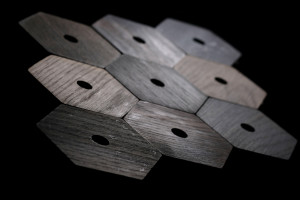Even though decoupling accessories are considered a niche subject, one finds them in many manufacturers’ portfolios. Once the opportunity to try the LessLoss Bindbreaker emerged, I was game. Enjoy!
Introduction
Many individuals wouldn’t associate audio hardware with shaky behaviour, which is understandable. Once put on a shelf, a stationary box filled with electronic components won’t budge in and of itself. However, products such as turntables, CD players and speakers, incorporate moving parts, which resonate and hence influence their surroundings and themselves. These unwanted vibrations, when tamed, often times lead to performance increases, and devices designed specifically to tackle these issues are in fact the backbone of many manufacturers’ portfolios. Vibration control not only isn’t anything new in the audio industry, but notably extends also to hardware free from any mechanically moving components.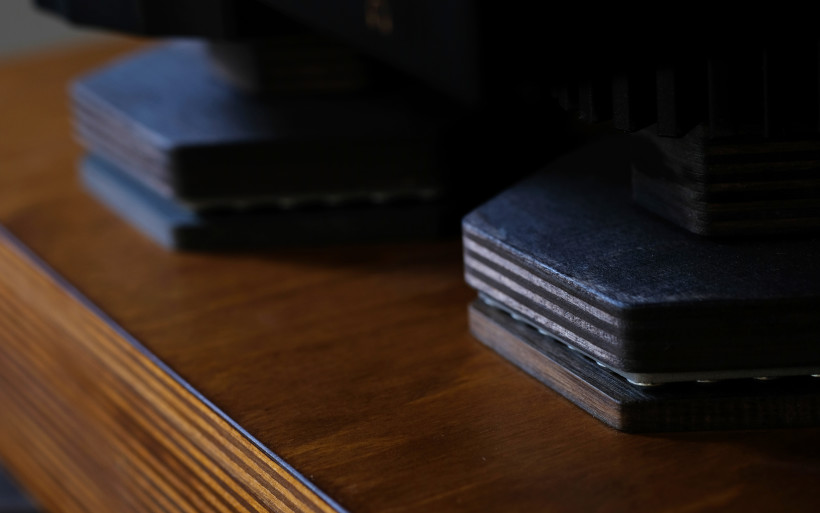 Audio devices based on delicate digital circuitry and/or noisy valves also audibly benefit from products meant to damp and/or transfer their resonant energies elsewhere. At least that’s my experience based on i.e. my audio rack loaded with two storage shelves and ball bearing decouplers underneath them. The more advanced pneumatic platform by the local Stacore audio house upped the efficacy ante high enough to emerge as the best such solution I’ve heard to date. Both listed products are expensive, heavy and need a lot of space, but the story doesn’t end with shelves. Vibrations can also be addressed to quite an extent via far smaller and more affordable means, known as decoupling feet or pucks.
Audio devices based on delicate digital circuitry and/or noisy valves also audibly benefit from products meant to damp and/or transfer their resonant energies elsewhere. At least that’s my experience based on i.e. my audio rack loaded with two storage shelves and ball bearing decouplers underneath them. The more advanced pneumatic platform by the local Stacore audio house upped the efficacy ante high enough to emerge as the best such solution I’ve heard to date. Both listed products are expensive, heavy and need a lot of space, but the story doesn’t end with shelves. Vibrations can also be addressed to quite an extent via far smaller and more affordable means, known as decoupling feet or pucks.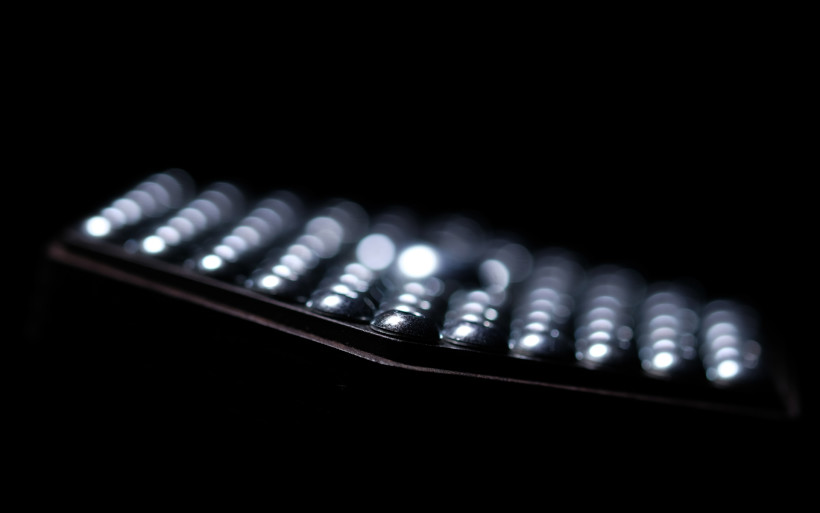 All petite anti-vibration items are in large part designed to insulate component products from the surface underneath and harness in their own microphonics. Performance and price aside, the diversity between such accessories can be narrowed down to the measures they’re based on to achieve this goal. The materials used and the main decoupling ingredients span from one or several hard balls locked in-between two extremely hard materials, to rubber suspension systems, with spikes, springs, wood, cork, artificial stone, and other combinations. In short, there are as many ways to execute this task as there are such products. Most audio houses I’m familiar with follow their own route and so does today’s LessLoss. This report’s Bindbreaker model is unlike any other decoupler item I’ve seen thus far, but that’s hardly any surprise given its maker’s track record. These Lithuanians aren’t copycats; they’re well-known for pursuing their own path and being successful at that.
All petite anti-vibration items are in large part designed to insulate component products from the surface underneath and harness in their own microphonics. Performance and price aside, the diversity between such accessories can be narrowed down to the measures they’re based on to achieve this goal. The materials used and the main decoupling ingredients span from one or several hard balls locked in-between two extremely hard materials, to rubber suspension systems, with spikes, springs, wood, cork, artificial stone, and other combinations. In short, there are as many ways to execute this task as there are such products. Most audio houses I’m familiar with follow their own route and so does today’s LessLoss. This report’s Bindbreaker model is unlike any other decoupler item I’ve seen thus far, but that’s hardly any surprise given its maker’s track record. These Lithuanians aren’t copycats; they’re well-known for pursuing their own path and being successful at that.
Build
Nine Bindbreaker feet sent my way were enough to accommodate three audio component products in total. Mathematics tell us here that three feet per one audio machine is the most optimal usage scenario, which in fact many manufacturers and enthusiasts follow. Each Bindbreaker measures (W x H) 93 x 38mm and consists of three materials only; steel, plywood and bog oak. The connection between its smaller hexagonal cylinder and the alike-shaped but wider base is fixed, but has some play to it. The latter part isn’t bonded with the bog wood bottom plate but just sits on it after user placement. The visual result is rather innocent and aesthetically appealing, however that’s just one man’s opinion. But the Bindbreaker’s description on LessLoss.com leaves no room for guesswork. Not a single aspect about this product is accidental.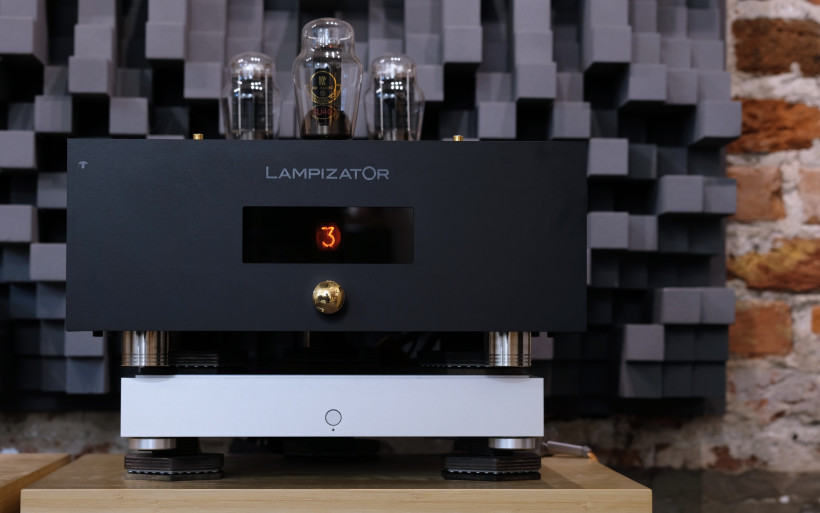 The manufacturer categorized the LessLoss Bindbreaker as a “hard” (i.e., not rubbery, springy) solution developed to combat vibrations of minuscule amplitude, which differentiates this product from those based on springy actions and reactions. Any rubbery approaches team LessLoss sees as effective in targeting low frequency large amplitude vibrations, but claims these are not relevant in audio hardware and exhibit a “slowing” effect on sonic outcome. Bindbreakers underneath a component are effectively directional sinks for resonances transferred into them; what vibrations they absorb don’t bounce back up.
The manufacturer categorized the LessLoss Bindbreaker as a “hard” (i.e., not rubbery, springy) solution developed to combat vibrations of minuscule amplitude, which differentiates this product from those based on springy actions and reactions. Any rubbery approaches team LessLoss sees as effective in targeting low frequency large amplitude vibrations, but claims these are not relevant in audio hardware and exhibit a “slowing” effect on sonic outcome. Bindbreakers underneath a component are effectively directional sinks for resonances transferred into them; what vibrations they absorb don’t bounce back up.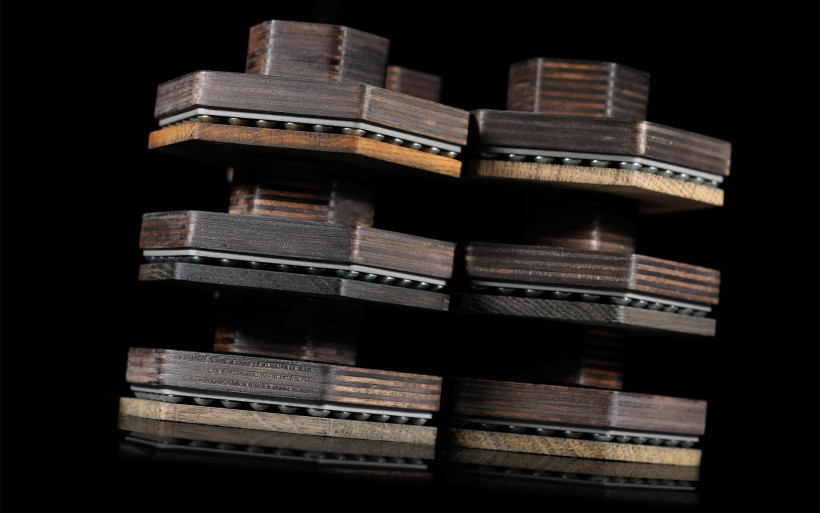 According to the manufacturer, the Bindbreaker’s action is twofold. The first step involves its top hexagonal piece’s polarization of vibrational modes, so that only those normal (as in, at a 90 degree angle) to gravity are let in deeper. Acoustic by nature, these vibrations travel through steel much more quickly than through wood. That’s the reason why wood-to-wood contacts are off the table and today’s upper cylinder connects to the base via a steel joining bolt. Vibrations that pass this element then rapidly spread onto the thick steel underbelly, which instantaneously conducts them to a matrix of steel bolts tightly embedded in plywood underneath. Any last remaining resonances found within their own hexagonal resonant cavities are damped via direct contact with the lowest wooden plate of the product, which is bog oak. In essence, the damping purposes of wood and the nearly immediate acoustic conductivity of steel, form a perfect tandem to quickly absorb vibrations and never give them back up to the gear sitting on top.
According to the manufacturer, the Bindbreaker’s action is twofold. The first step involves its top hexagonal piece’s polarization of vibrational modes, so that only those normal (as in, at a 90 degree angle) to gravity are let in deeper. Acoustic by nature, these vibrations travel through steel much more quickly than through wood. That’s the reason why wood-to-wood contacts are off the table and today’s upper cylinder connects to the base via a steel joining bolt. Vibrations that pass this element then rapidly spread onto the thick steel underbelly, which instantaneously conducts them to a matrix of steel bolts tightly embedded in plywood underneath. Any last remaining resonances found within their own hexagonal resonant cavities are damped via direct contact with the lowest wooden plate of the product, which is bog oak. In essence, the damping purposes of wood and the nearly immediate acoustic conductivity of steel, form a perfect tandem to quickly absorb vibrations and never give them back up to the gear sitting on top.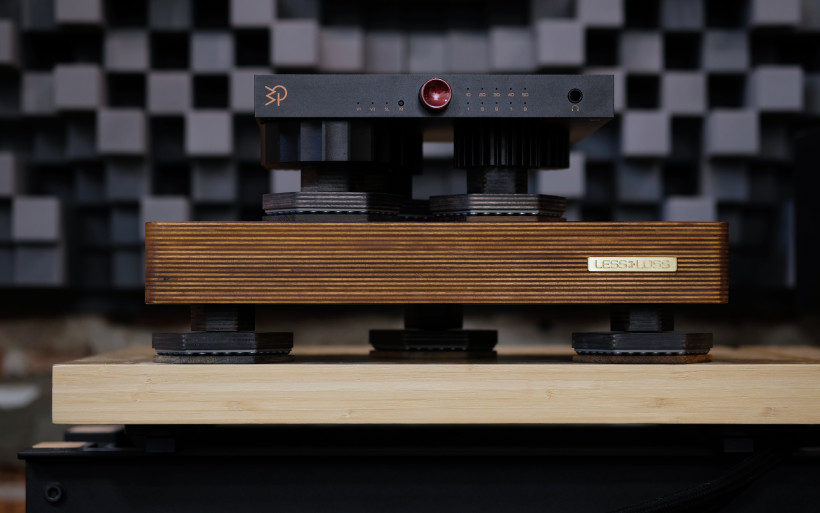 Nearly all decoupler feet available on the market are round, however the Bindbreaker’s hexagonal shape is derived from pursuing maximum surface boundary layer between the two used materials. A hexagon is the only figure formed when maximum density of circles are arranged. The wood-steel-wood sandwich might look simple, but it took team LessLoss several years to establish this concept and to work out all the details. The Bindbreakers are straightforward in use and will work with components up to 100kg mass. The compatibility list includes sources, amps, power components and shelves, but not loudspeakers. Today’s pucks should be put on a surface first, then a component product should be lowered onto them via one vertical placement. Their usage one at a time isn’t exactly forbidden, but surely not advised.
Nearly all decoupler feet available on the market are round, however the Bindbreaker’s hexagonal shape is derived from pursuing maximum surface boundary layer between the two used materials. A hexagon is the only figure formed when maximum density of circles are arranged. The wood-steel-wood sandwich might look simple, but it took team LessLoss several years to establish this concept and to work out all the details. The Bindbreakers are straightforward in use and will work with components up to 100kg mass. The compatibility list includes sources, amps, power components and shelves, but not loudspeakers. Today’s pucks should be put on a surface first, then a component product should be lowered onto them via one vertical placement. Their usage one at a time isn’t exactly forbidden, but surely not advised.
Sound
In order to review the LessLoss Bindbreaker, fidata HFAS-S10U handled storage and transport duties, then LampizatOr Pacific DAC (KR Audio T-100/Living Voice 300B + KR Audio 5U4G Ltd. Ed.) or LessLoss Echo’s End took over to pass the signal to Kinki Studio EX-M1 or Trilogy 925, and then to Boenicke’s W11 SE+ with the S3 speaker cable in-between. All key components were connected via LessLoss C-MARCs to the GigaWatt PC-3 SE EVO+ power conditioner, which was then married to the main in-wall outlet via LC-3 EVO cord by the same manufacturer. Boenicke Audio IC3 CG interconnect was used and so was iFi audio’s full USB stack; micro iUSB3.0, nano iGalvanic3.0 and 3x Mercury3.0 cables. The headphone rig in form of Bakoon AMP-13R and Susvara cans was on duty, too. The Lithuanian pucks were put up against my Franc Audio Accessories Wood Block 1+3 rack plus stock decouplers mounted in this review’s key hardware; three different amps and two DACs. Due to weight and limited shelf space, shifts from these machines’ own feet to Bindbreakers were executed one component at a time. As per LessLoss suggestion, each product sat directly on three Lithuanian items to leave out stock supports. The Bakoon AMP-13R didn’t cope however, its sizing and unusual underbelly were the reasons.
The Lithuanian pucks were put up against my Franc Audio Accessories Wood Block 1+3 rack plus stock decouplers mounted in this review’s key hardware; three different amps and two DACs. Due to weight and limited shelf space, shifts from these machines’ own feet to Bindbreakers were executed one component at a time. As per LessLoss suggestion, each product sat directly on three Lithuanian items to leave out stock supports. The Bakoon AMP-13R didn’t cope however, its sizing and unusual underbelly were the reasons.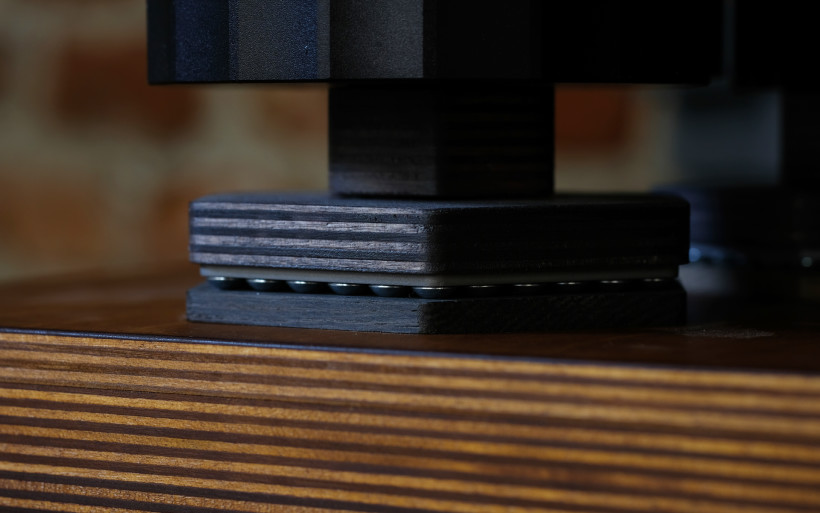 Due to its compact frame and puny mass, the Bakoon exploited solely as the headfi deck emerged as the most hassle-free starting point available. Three Bindbreakers located on the upper mid shelf of my audio furniture were strategically aligned to touch the AMP-13R’s two most protruding heat exchange nodes plus its transformer enclosure. Enough space nearby was left for this amp to sit on its own aluminium parts as it usually does. This setup in effect allowed me to pretty much instantly move the product to and from Lithuanian decouplers. Back then I imagined that component shifts this quick and convenient should translate to easily served sonic alterations. No dice.
Due to its compact frame and puny mass, the Bakoon exploited solely as the headfi deck emerged as the most hassle-free starting point available. Three Bindbreakers located on the upper mid shelf of my audio furniture were strategically aligned to touch the AMP-13R’s two most protruding heat exchange nodes plus its transformer enclosure. Enough space nearby was left for this amp to sit on its own aluminium parts as it usually does. This setup in effect allowed me to pretty much instantly move the product to and from Lithuanian decouplers. Back then I imagined that component shifts this quick and convenient should translate to easily served sonic alterations. No dice.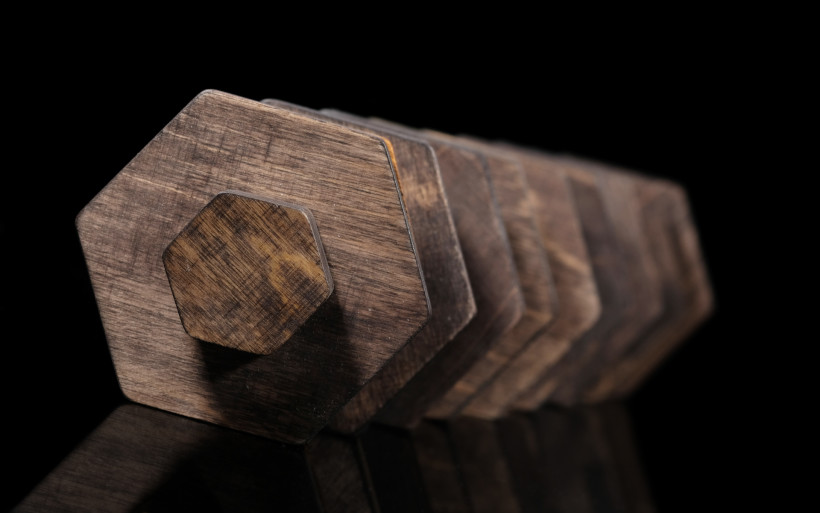 At first I suspected that tweaks such as today’s are subtle by nature and most fitting not under amps but digital hardware located upstream. It makes sense to apply any signal conditioning measures as early in the chain as possible. My own experiments conducted thus far led me to support this theory. My digital end’s response to resonance control and various cables was more audible versus on amps or line stages. I also couldn’t exclude my own audio furniture’s work. My educated guess was that perhaps these conditions didn’t leave enough sonic room for the Bindbreakers, after all designed to do a similar if not the same thing. In addition, the AMP-13R fronted by the Lampizator Pacific DAC and paired with Susvara cans, happens to be the most revealing setup I currently own. This headfi chain also removes the room from the equation to magnify all changes more potently than most speakers ever will. That’s why I thought that this review’s decoupling feet applied underneath that rig should be more audible than anywhere else, but they weren’t. At least not from the get-go.
At first I suspected that tweaks such as today’s are subtle by nature and most fitting not under amps but digital hardware located upstream. It makes sense to apply any signal conditioning measures as early in the chain as possible. My own experiments conducted thus far led me to support this theory. My digital end’s response to resonance control and various cables was more audible versus on amps or line stages. I also couldn’t exclude my own audio furniture’s work. My educated guess was that perhaps these conditions didn’t leave enough sonic room for the Bindbreakers, after all designed to do a similar if not the same thing. In addition, the AMP-13R fronted by the Lampizator Pacific DAC and paired with Susvara cans, happens to be the most revealing setup I currently own. This headfi chain also removes the room from the equation to magnify all changes more potently than most speakers ever will. That’s why I thought that this review’s decoupling feet applied underneath that rig should be more audible than anywhere else, but they weren’t. At least not from the get-go.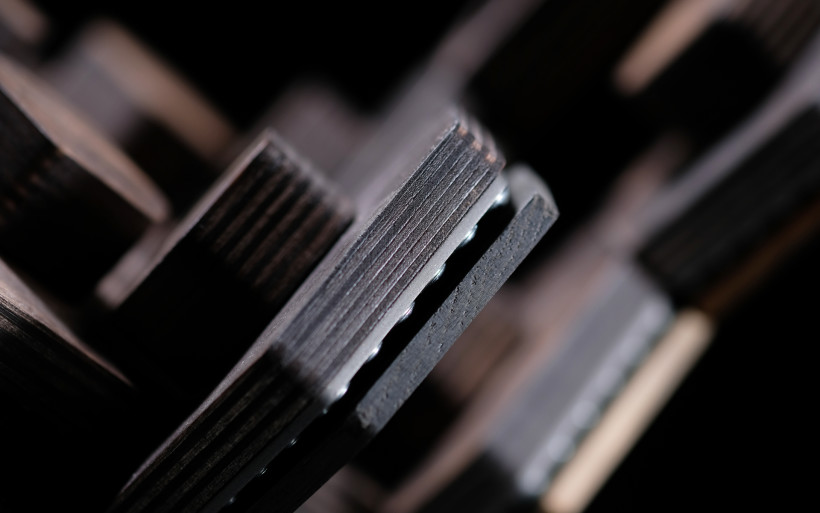 The key to unlocking the mystery above was my own ability to grasp the changes introduced by Bindbreakers. This time around the adaptation process involved multiple back and forths. It was clear that today’s wooden pucks were subtle in action, whereas I at first was clueless where my focus should be exactly. Tonal adjustments and changes associated with imaging were my guess. However, aural angles distinctive enough to hold on to were found in different areas. The Bakoon with Bindbreakers underneath was snappier; rapid transients it further shortened and injected extra power to make the effect more palpable, involving, energetic and somewhat spicier. Picture hand claps delivered in series as heard on Acid’s “Creeper” and similar effects. I took this particular shift as extended dynamic range, thus a clear upgrade, then followed by clearer lowest octaves and more firm and precisely sketched instrumental outlines. As it shortly turned out, these changes set the tone for upcoming hardware triangulations.
The key to unlocking the mystery above was my own ability to grasp the changes introduced by Bindbreakers. This time around the adaptation process involved multiple back and forths. It was clear that today’s wooden pucks were subtle in action, whereas I at first was clueless where my focus should be exactly. Tonal adjustments and changes associated with imaging were my guess. However, aural angles distinctive enough to hold on to were found in different areas. The Bakoon with Bindbreakers underneath was snappier; rapid transients it further shortened and injected extra power to make the effect more palpable, involving, energetic and somewhat spicier. Picture hand claps delivered in series as heard on Acid’s “Creeper” and similar effects. I took this particular shift as extended dynamic range, thus a clear upgrade, then followed by clearer lowest octaves and more firm and precisely sketched instrumental outlines. As it shortly turned out, these changes set the tone for upcoming hardware triangulations.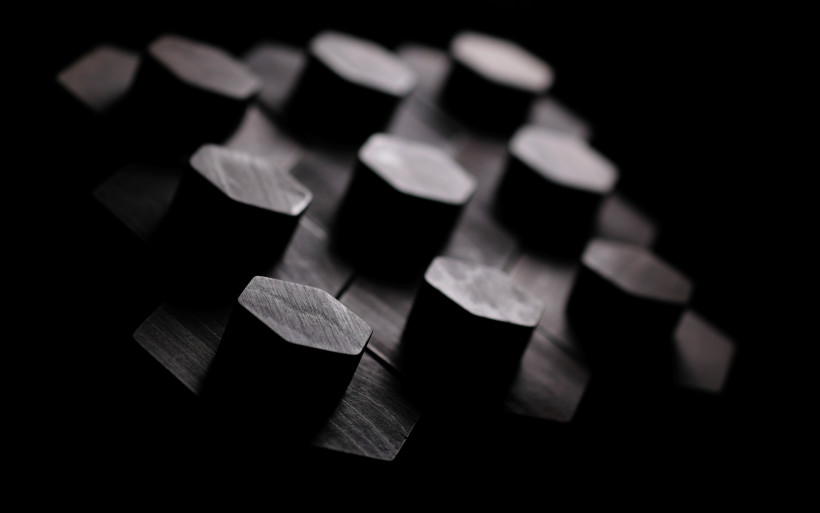 The next stop included two big amps and W11 SE+ loudspeakers instead of the headfi setup. Both the EX-M1 and 925 scored extra points on clarity; virtual outlines were yet again penciled stronger and thus separated a notch better to become more visible in effect. The Brit in particular was a bit speedier but without any loss or gain on its downstairs fullness. The already very smooth Kinki became a touch more buttery on this count as well. Although subtle, all listed changes didn’t involve any specific tonal balance adjustments, hence were mapped as rather universal. At first I thought that midrange clarity netted the effect a bit slimmer than usual, but in reality it wasn’t. Extra speed and energy happened without any heft or temperature makeovers. It’s safe to say that Bindbreakers underneath all three amps opened them up in a way and extended their inherent flavours in the dynamic and snappy direction at no real cost. Figuratively speaking, today’s trials acted like an espresso shot; it woke me up but went in smooth enough to recognize its quality.
The next stop included two big amps and W11 SE+ loudspeakers instead of the headfi setup. Both the EX-M1 and 925 scored extra points on clarity; virtual outlines were yet again penciled stronger and thus separated a notch better to become more visible in effect. The Brit in particular was a bit speedier but without any loss or gain on its downstairs fullness. The already very smooth Kinki became a touch more buttery on this count as well. Although subtle, all listed changes didn’t involve any specific tonal balance adjustments, hence were mapped as rather universal. At first I thought that midrange clarity netted the effect a bit slimmer than usual, but in reality it wasn’t. Extra speed and energy happened without any heft or temperature makeovers. It’s safe to say that Bindbreakers underneath all three amps opened them up in a way and extended their inherent flavours in the dynamic and snappy direction at no real cost. Figuratively speaking, today’s trials acted like an espresso shot; it woke me up but went in smooth enough to recognize its quality.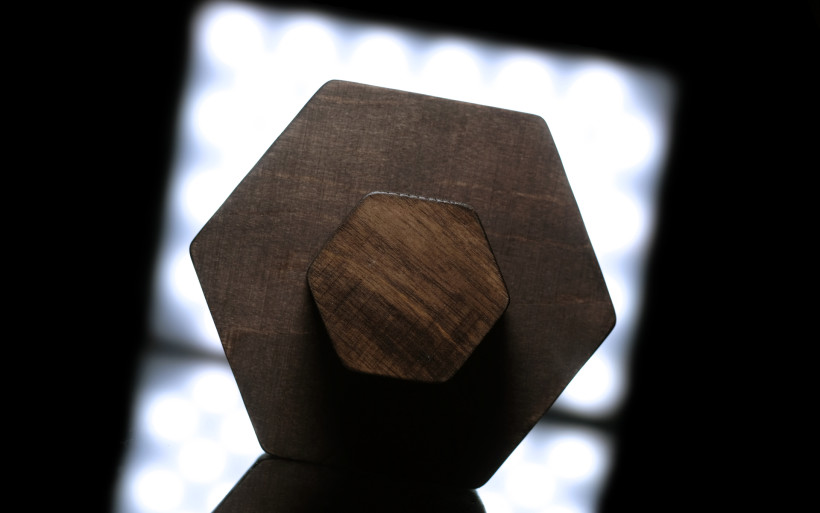 Even though at first it was barely noticeable, the Bindbreakers’ effect in time morphed into a more pronounced one, to a point where I wondered how I couldn’t easily hear it earlier. But most importantly, I had to get familiar with the Lithuanian sensation and understand it first. Once this was done, tracks loaded with vigorous fully blown bass lines or female lips nearly touching the mic allowed me to easily notice today’s behavioural pattern. It was repetitive from one device to another, but the two most promising machines were still to come.
Even though at first it was barely noticeable, the Bindbreakers’ effect in time morphed into a more pronounced one, to a point where I wondered how I couldn’t easily hear it earlier. But most importantly, I had to get familiar with the Lithuanian sensation and understand it first. Once this was done, tracks loaded with vigorous fully blown bass lines or female lips nearly touching the mic allowed me to easily notice today’s behavioural pattern. It was repetitive from one device to another, but the two most promising machines were still to come. Digital, loaded with noisy DHT valves and two different power supplies one next to another, the Pacific DAC in theory scored the A+ in the compliance chart with Bindbreakers. As it soon turned out, the top Lampizator machine benefited from their influence more than amps and that was clear. However, it sat on three heavy feet made by the local Stacore operation, each coupled with one rounded spike on its supportive platter. The standard anti-vibration scheme in my DAC netted the result a bit speedier but slightly itchier and slimmer versus today’s pucks, which reversed this order by shifting the focal point to the more mellow, relaxed and less grainy, yet as equally opened up, direction. The more switches were made, the more I viewed both solutions as equal on potency albeit differently voiced. Both also bested my rack’s shelf alone, namely the Pacific on its regular feet minus Stacore’s pointy bases underneath.
Digital, loaded with noisy DHT valves and two different power supplies one next to another, the Pacific DAC in theory scored the A+ in the compliance chart with Bindbreakers. As it soon turned out, the top Lampizator machine benefited from their influence more than amps and that was clear. However, it sat on three heavy feet made by the local Stacore operation, each coupled with one rounded spike on its supportive platter. The standard anti-vibration scheme in my DAC netted the result a bit speedier but slightly itchier and slimmer versus today’s pucks, which reversed this order by shifting the focal point to the more mellow, relaxed and less grainy, yet as equally opened up, direction. The more switches were made, the more I viewed both solutions as equal on potency albeit differently voiced. Both also bested my rack’s shelf alone, namely the Pacific on its regular feet minus Stacore’s pointy bases underneath.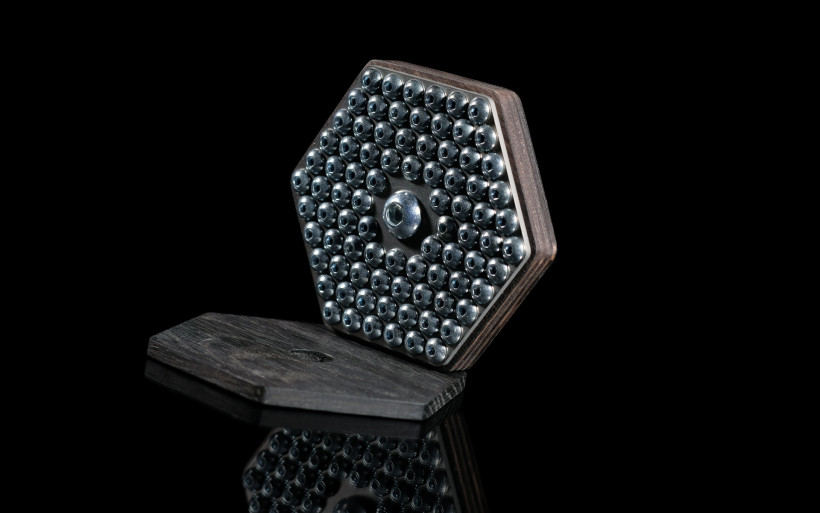 The last exercise included the LessLoss Echo’s End Original DAC, which purposely doesn’t incorporate any stock feet. Three Bindbreakers in-between this machine and my rack’s shelf not only resulted in more potency points versus the Pacific case, but also showed how much more performance the Lithuanian DAC still held. The improvement today’s decouplers introduced in this particular case still wasn’t of night and day variety, but my ears mapped it as the biggest yet. As I wrote in my Echo’s End review published here, this machine’s core voice includes pristine backdrop, moisture, overall elegance and top notch expressiveness well-trained ears oftentimes associate with the R-2R architecture. Mellowness and earthiness also are a part of this sophisticated package. Three Bindbreakers underneath the Lithuanian DAC yet again acted in the already well-known way, which resulted in sonics speedier and more open. Thinner and stronger pressed pencil swirls applied to all virtual outlines, which upped the ante on overall clarity. Bass became tighter and snappier but had its density intact. Background got a bit darker to reveal even more tiny bits suspended in-between instruments. The general route the Bindbreaker trio took emerged as the opposite to the one followed by the DAC itself, which spelled synergy between these Lithuanian goods beyond the reach of the other machines involved in this article.
The last exercise included the LessLoss Echo’s End Original DAC, which purposely doesn’t incorporate any stock feet. Three Bindbreakers in-between this machine and my rack’s shelf not only resulted in more potency points versus the Pacific case, but also showed how much more performance the Lithuanian DAC still held. The improvement today’s decouplers introduced in this particular case still wasn’t of night and day variety, but my ears mapped it as the biggest yet. As I wrote in my Echo’s End review published here, this machine’s core voice includes pristine backdrop, moisture, overall elegance and top notch expressiveness well-trained ears oftentimes associate with the R-2R architecture. Mellowness and earthiness also are a part of this sophisticated package. Three Bindbreakers underneath the Lithuanian DAC yet again acted in the already well-known way, which resulted in sonics speedier and more open. Thinner and stronger pressed pencil swirls applied to all virtual outlines, which upped the ante on overall clarity. Bass became tighter and snappier but had its density intact. Background got a bit darker to reveal even more tiny bits suspended in-between instruments. The general route the Bindbreaker trio took emerged as the opposite to the one followed by the DAC itself, which spelled synergy between these Lithuanian goods beyond the reach of the other machines involved in this article. At this point I knew which product benefited the most from Bindbreakers’ presence, the LessLoss Echo’s End emerged as the DAC of choice. Still, six pucks left allowed for their application under two more products; Kinki Studio’s integrated and fidata’s storage/transport. Each device occupied one shelf of my rack’s upper level. In short, the result was better with Bindbreakers than without them, it arrived at no sonic penalty and scored high enough to justify the expense given my platform’s total value. In this context today’s pucks introduced the subtle yet audible improvement for mere pennies, but there was one more thing left to possibly push the potency index a bit higher. It involved hardware stacking.
At this point I knew which product benefited the most from Bindbreakers’ presence, the LessLoss Echo’s End emerged as the DAC of choice. Still, six pucks left allowed for their application under two more products; Kinki Studio’s integrated and fidata’s storage/transport. Each device occupied one shelf of my rack’s upper level. In short, the result was better with Bindbreakers than without them, it arrived at no sonic penalty and scored high enough to justify the expense given my platform’s total value. In this context today’s pucks introduced the subtle yet audible improvement for mere pennies, but there was one more thing left to possibly push the potency index a bit higher. It involved hardware stacking.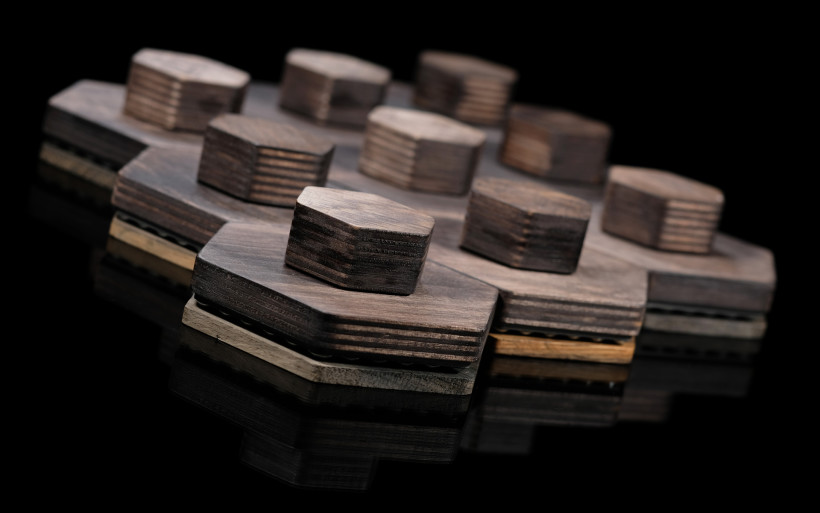 I was told that better contact pressure achieved via additional mass should elevate today’s decoupling efficacy. Lightweight hardware with Bindbreakers underneath and extra weight on top led to the following sandwich; three wooden decouplers below Echo’s End DAC, the next set of these on its hood and the EX-M1 integrated as the final layer. The general sonic direction didn’t shift but Bindbreakers’ influence to my ears increased somewhat as per their manufacturer’s prediction.
I was told that better contact pressure achieved via additional mass should elevate today’s decoupling efficacy. Lightweight hardware with Bindbreakers underneath and extra weight on top led to the following sandwich; three wooden decouplers below Echo’s End DAC, the next set of these on its hood and the EX-M1 integrated as the final layer. The general sonic direction didn’t shift but Bindbreakers’ influence to my ears increased somewhat as per their manufacturer’s prediction.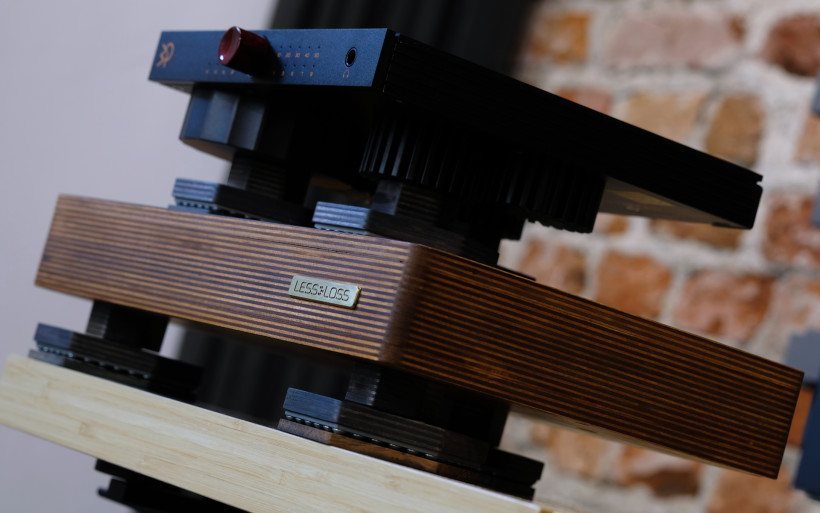 One shelf occupied by two products stacked resulted in a fairly reasonable visual, but I wondered whether a tower of all key components and nine Bindbreakers in-between would change anything, looks be damned. To my surprise, yet another small performance leap in the well-known direction was detected. However, two shelves now empty and just one busy with three items resulted in the view quite silly to say the least and quite scary from a practical standpoint. Although aesthetics and common sense would prevent me from going this route permanently, the takeaway was clear: extra heft on top of digital devices with today’s pucks underneath, did audibly more versus the usual one-box-per-shelf routine.
One shelf occupied by two products stacked resulted in a fairly reasonable visual, but I wondered whether a tower of all key components and nine Bindbreakers in-between would change anything, looks be damned. To my surprise, yet another small performance leap in the well-known direction was detected. However, two shelves now empty and just one busy with three items resulted in the view quite silly to say the least and quite scary from a practical standpoint. Although aesthetics and common sense would prevent me from going this route permanently, the takeaway was clear: extra heft on top of digital devices with today’s pucks underneath, did audibly more versus the usual one-box-per-shelf routine.
Summary
I’m aware that the idea of spending money on several wooden pucks to mainly address sonics might seem silly, scary or borderline crazy. If you view such products as pure snake oil, rest assured that I’ve been there and I’ve done that too, which is why I understand you. However now, after several adventures with various decoupling approaches, I beg to differ, whereas today’s LessLoss Bindbreaker happens to be yet another reminder why.
This report’s anti-vibration accessories neither are of key importance, nor do they pretend to fit this description. On the priority list they sit below key component hardware, room acoustics, power systems, interconnects/speaker cables and an audio rack. However, once all this is sorted and the crave to upgrade is still there, but not necessarily the readiness to spend heavy bucks and/or part ways with anything already owned, then is the time to investigate decoupling sorters. Then, such an expense makes sense and quite possibly will be justified.
Even though LessLoss Bindbreakers’ work revolved around subtle finishing touches more than anything else, it was audible and free from any sonic trade-offs, which spelled the penalty-free safe upgrade path. Having this in mind and given my rig’s total value, today’s score on price-to-performance ratio was generous. Save select hardware swaps, I’d have a hard time spending the same coin elsewhere and netting a similar result. ‘Till next time!
Associated Equipment:
- Amplifier: Trilogy 925, Kinki Studio EX-M1, Bakoon AMP-13R
- DAC: LampizatOr Pacific (KR Audio T-100 / Living Voice 300B + KR Audio 5U4G Ltd. Ed.), LessLoss Echo’s End Original
- Speakers: Boenicke Audio W11 SE+
- Transport: fidata HFAS-S10U
- Headphones: HifiMan Susvara
- Speaker cables: Boenicke Audio S3, LessLoss C-MARC
- Interconnects: Boenicke Audio IC3 CG
- Power components: Gigawatt PC-3 SE EVO+, Gigawatt PF-2 + Gigawatt LC-2 MK2 + Forza AudioWorks Noir Concept/Audiomica Laboratory Ness Excellence/LessLoss C-MARC
- Rack: Franc Audio Accesories Wood Block Rack
- Music: NativeDSD
Retail prices of reviewed components in EU (incl. 22% VAT):
- LessLoss Bindbreaker: $160/ea.
- 2+/4+ units: 5%/10% off respectively
Manufacturer: LessLoss


